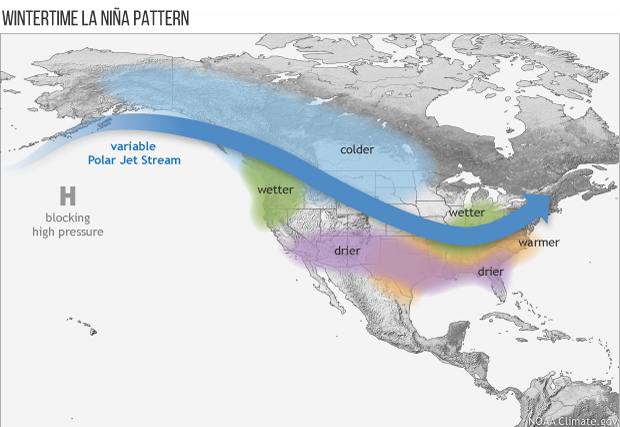December warmer, drier than normal

WATERLOO – When it comes to seasons, the atmospheric science world isn’t the most patient. Why wait for the solstice or equinox when we can declare the start of the seasons on the first of the month? So come December 1, meteorological winter is upon us. And what temperatures and precipitation will we see? According to the December 2020 outlook from NOAA’s Climate Prediction Center, much of the contiguous United States is expected to observe a warmer and drier-than-average end of the year.
A monthly reminder that these outlook maps are not a forecast for the absolute temperature or precipitation amounts in December. They are the probability (percent chance) that December temperatures or precipitation will be in the upper, middle, or lower third of the climatological record (1981-2010) for December. We refer to these categories as “well above” and “well below” average. The colors (red or blue for temperatures, brown or teal for precipitation) indicate which outcome is the most likely. Darker colors reflect higher changes of a given outcome; not more extreme conditions. Head to the end of this post for more on the math.
A warm start to winter for many across the U.S.
Like many monthly outlooks in 2020, the December 2020 temperature outlook has much of the country covered in red as above-average temperatures are favored. The highest chance for temperatures to be above-average in December—50-60% chance—looks to be across the Northern Plains, and northern Alaska. Meanwhile, a large swath of the country from the Southwest stretching to the Great Lakes and into New England has a smaller, but still evident, tilt in the odds (40-50% chance) towards a warmer-than-average month.
Meanwhile, in a twist, unlike the November outlook when no cooler-than-average areas were forecast anywhere, the December 2020 outlook does have some blue. According to scientists at NOAA’s Climate Prediction Center, if you are looking for a place where December temperatures could be below-average, your best bet is to head to the Sunshine State with southern Florida having the highest chances for a cooler-than-average December.
